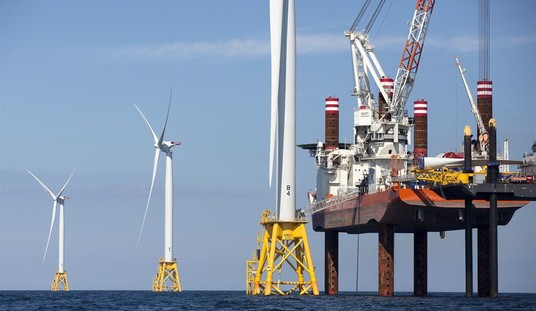Good thing neither of the two parties is depending very heavily on young adults to replicate their high turnout in 2008 and 2012, eh?
Democrats must be wondering what it’s going to take. Bernie Sanders is on the trail, Clinton is doing dopey “Funny or Die” segments, Katy Perry even took her top off. How can these darned millennials be convinced that their corrupt, charmless, dishonest nominee is worth turning out for?

That is … quite a trend. The glass-half-empty view for Clinton is that the great question of the election, whether she can reassemble Obama’s coalition, is being answered and that answer ain’t good. Young adults won’t turn out. She’ll have to hope there are enough college-educated white women at the polls to balance Trump’s gigantic margins among the white working class. The glass-half-full view is that she’s already ahead in the polls nationally with plenty of room still to grow among the young before November. And not all of the decline in enthusiasm among millennials is necessarily attributable to her. Romney won 37 percent of the 18-29 vote in 2012 but Trump routinely polls terribly among that group, to the point that he trails Gary Johnson in some surveys. It may be that Republican millennials are deserting Trump at rates similar to or greater than Democratic millennials deserting Hillary, which would blunt the effect of the downturn in turnout on her overall numbers.
One other thing. The number of voters aged 18-34 who said they would definitely vote was also down sharply at this point in 2012 from the heights of 2008, throwing a scare into Obama that even he couldn’t reassemble the “Obama coalition.” In the end, though, they showed up for him. According to the exit polls, the 18-29 group four years ago was actually a slightly larger share of the electorate (19 percent) than it was in 2008 (18 percent). Either they were more prepared to vote in 2012 than they let on when Gallup asked them that fall or they rallied in the final weeks of the election.
Still, any downturn in young adults’ enthusiasm to vote is good news on balance for Trump. What’s not good news for Trump is this new analysis of voter registrations by Dave Wasserman, which is worth your time to read in full. The potential for a Trump surge this fall lies in the fact that there are enormous numbers of white voters who didn’t vote in the last election, a fact you’re already well aware of if you remember this Nate Cohn piece from over the summer or Sean Trende’s series on the subject after the last election. How enormous a number are we talking about? Try 55 million, more than 10 times Obama’s national margin of victory over Romney in 2012. By Wasserman’s best estimate, 47 million of those white nonvoters have no college degree, making them prime candidates to support Trump. The number of potential Trump voters out there (whites without degrees who didn’t vote last time) is so vast that Trump would only need to turn out small percentages of them in key states to swing the entire election — 2.9 percent in Florida, 7.5 percent in Ohio, 11.8 percent in Pennsylvania. The problem is that most of the nonvoter pool, 40 out of 55 million, isn’t registered to vote at all. And as best as Wasserman can tell, there are no signs yet that they’re starting to register this fall in order to vote for Trump:

If “undercover Trump voters” were emerging, you’d expect the numbers in the first column to be conspicuously larger than the ones in the second column. It’s not a disaster for Trump that they aren’t since there are still 15 million or so whites — three times Obama’s 2012 margin of victory — who are registered to vote even though they chose not to cast a ballot last time. But that’s a much smaller pool from which to squeeze out winning margins. Trump’s appeal to working-class whites is stronger than any Republican’s since Reagan but his lack of a sophisticated turnout operation might end up with him leaving lots of potential votes on the table, easily enough to mean the difference between victory and defeat.
Read this post from a few months back about Cohn’s analysis for further thoughts on the “missing white voters.” One hopeful detail for Trump in Cohn’s reckoning is that Obama might have won a far greater share of the working-class white vote in 2012 than the exit polls suggested. If you go by population estimates from the national census rather than the exit polls, O may have taken 34 percent of the vote among that group, not the 25 percent that the media traditionally credits him with. Assuming that’s correct then Trump has a potential path to victory among working-class whites who are already registered and have a track record of voting — he simply needs to flip some of the ones who made up Obama’s winning margin in 2012 from Democratic to Republican this time. That’s easier said than done, but at least there are no logistical difficulties in doing it. If Trump makes the sale to enough of those voters to turn red this time, he can win.








Join the conversation as a VIP Member